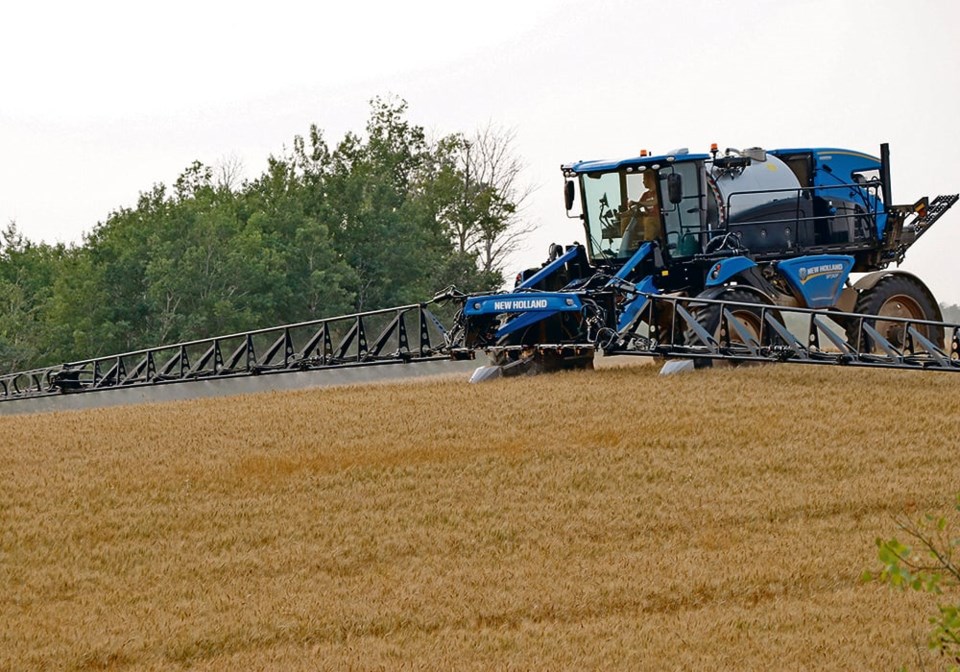SASKATOON – Water cleanliness should be a top priority for producers when sourcing water for spraying said Kim Brown, Manitoba provincial weeds specialist.
Spraying with dirty water risks contaminants tying up active ingredients in herbicides, rendering them ineffective.
“If you’ve got dirty water, (substances in there) will actually antagonize or will tie up glyphosate and diquat and they will not work at all,” Brown said.
She said dirty water must be filtered before loaded into the sprayer.
Farmers can test their water cleanliness by filling a five-gallon pail. They should be able to see to the bottom of the pail.
However, visible mud and organic matter is only part of the picture. There are also chemical issues to deal with, like concentrations of mineral ions and salts.
Water qualities such as hardness, the presence of bicarbonates, iron and manganese all play a role in how effective an application will be. The latter two are a particular note in irrigation, as oxidation can lead to the formation of precipitates that can plug screens and nozzles.
“This is something that cannot be corrected with additives. This is something where if you do have high iron and high manganese source(s) in water, then you need to try to find an alternative water source for spraying,” Brown said.
On water test results, total dissolved solids represent all of the calcium, magnesium, sodium, sulphate, chloride and bicarbonate found in water. Calcium, magnesium and sodium are cations, which have a positive charge. Sulphate, chloride and bicarbonate are anions, which carry a negative charge.
“These are basically the problem ions that cause issues when we’re spraying,” Brown said.
Water tests also show pH levels. There’s not much information on how extreme pH levels impact herbicides, Brown noted, although results from six to eight generally indicate good water. Too far outside that range and producers should be looking elsewhere to fill their tanks.
Salinity is also sometimes included on water tests and can serve as a substitute for a total dissolved solids reading and is easier and cheaper to measure at a lab, Brown said. If the electrical conductivity numbers used to gauge salinity on water tests is less than 500, it likely won’t impact pesticides.
Challenges with hard water boil down to high levels of calcium and magnesium. Most water tests report this in terms of calcium carbonate (CACO3) equivalent. Ions such as iron, potassium, and nitrate could also be present, but are less significant. “They do have a contribution to water hardness, but the big players are calcium and magnesium,” Brown said.
Weak acid herbicides like glyphosate and amine formulations of 2,4 D are among the chemistries in the crosshairs when water is too hard. Water hardness above 250-230 CACO3 equivalent should be treated.
Bicarbonates are usually associated with high sodium in water. They’re a problem for chemistries like 2,4 D amine, tralkoxydim, sethoxydim and clethodim. Levels above 500 parts per million (ppm) should be treated.
Data from Saskatchewan Agriculture Water Quality and Herbicides suggests that water hardness must be under 350 ppm CaCO3 equivalent if the producer wants to get away with a low glyphosate rate on annual grass weeds. Between 350-700 ppm, farmers are urged to drop the water volume in their mixes.
“Basically, you want less of that water and more of the glyphosate in the mix, because that means there’s less of these cations, less of the calcium and magnesium that’s going to tie up the glyphosate,” Brown said.
Bumping up the glyphosate concentration, however, has its own downsides. Good spray coverage is critical for weed control results, especially when glyphosate is mixed with burnoff products such as contact herbicides. “A lot of that is (from) water volume, so the only reason you would need to be dropping the water volume back is if you’ve got hard water and you’re not treating it,” Brown said.
If producers have hard water, but want to turn to 2,4 D, the weed specialist suggested they either find a different water source with better quality, or use an ester formulation. If they do use the amine formulation, they’ll want to use the highest recommended rate and may want to use a non-ionic surfactant at a rate of one gallon per 1,000 gallons.
The Province of Manitoba’s crop protection guide suggests reducing water volumes in the tank and adding ammonium sulphate at 2.4 litres per acre to help mitigate hard water impacts. For extremely hard water though, the province says it’s time to look for your spray water somewhere else.




